Tavole di San Giuseppe – St Joseph’s Tables
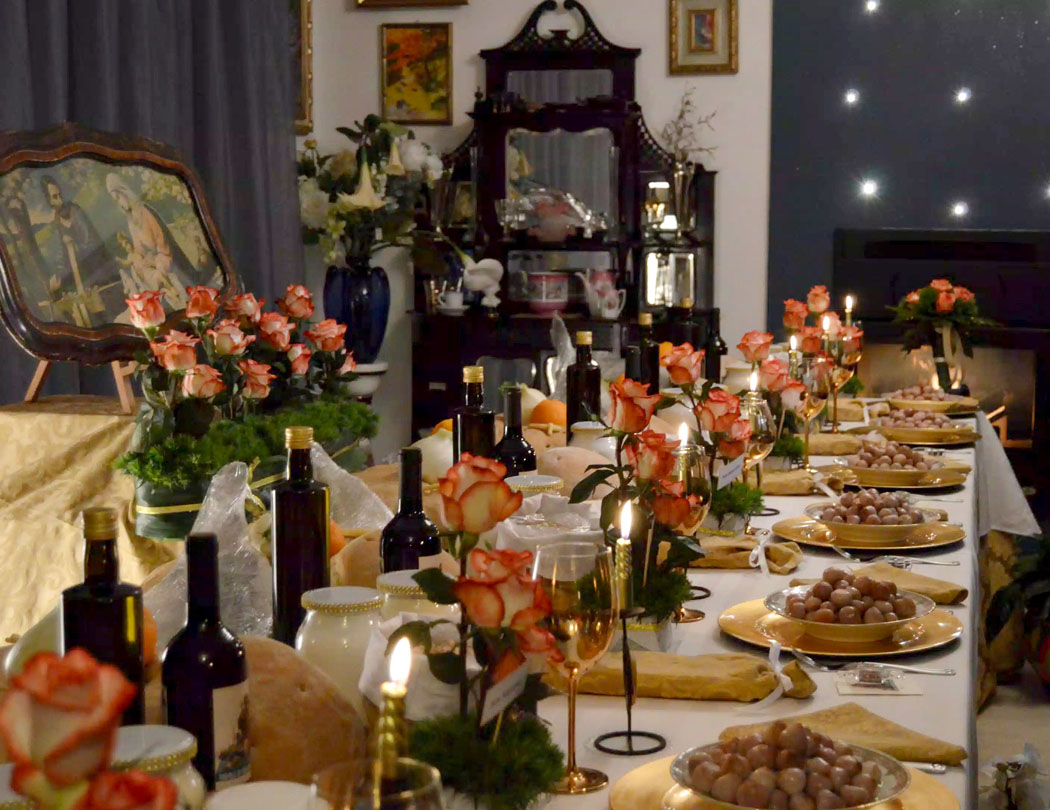
This weekend we were back in Puglia! We’d been invited to celebrate the festival of Tavole di San Giuseppe (St Joseph’s Tables). We were guests of the Mayor of Minervino di Lecce and he was excited to show us the traditions that they celebrate. The Tavole di San Giuseppe is a festival held on the 19th March. The tradition is only observed in a few towns in the Salento region of Puglia (and also some in Sicily) but it is one of the most important days on the religious calendar. Not only were we here to observe the festival but we would get to take part in it too.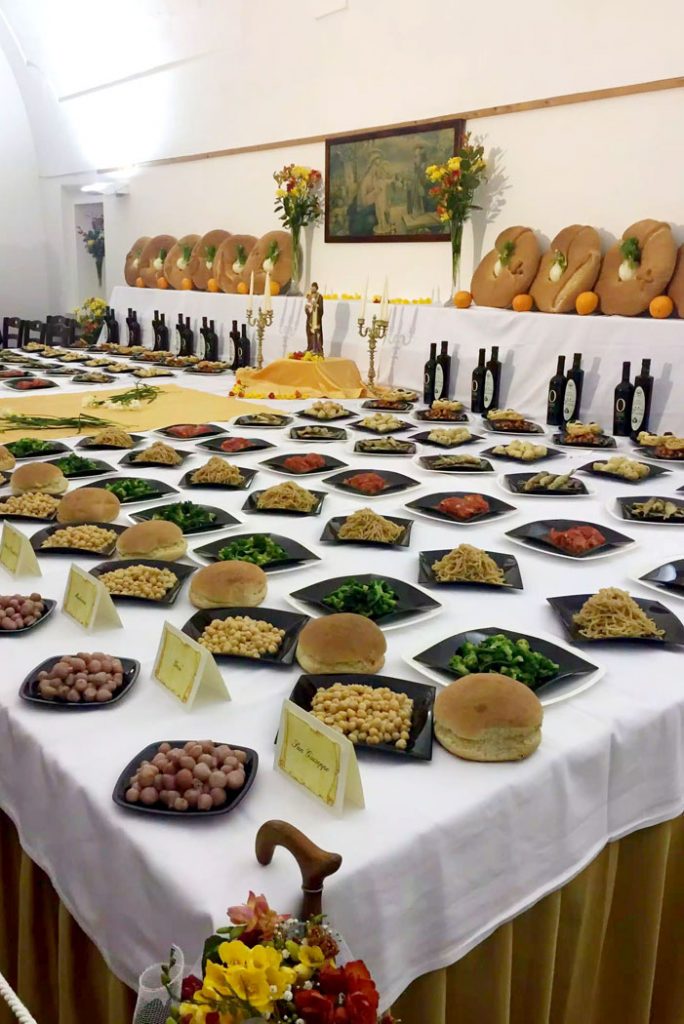
The Origins of the Tavole di San Giuseppe
The Tavole di San Giuseppe has its origins as a festival of charity. There are two possible theories for the origin of this festival. The first is that it was begun by the “Confraternities of St. Joseph”, who dedicate their time to providing for the poor. They decided to implement a feast day in the name of St Joseph which would provide a hot meal for the needy in their local area. The other theory is that the during the Byzatine period, monks, with their spirit of charity and love towards the poor local people, offered protection and hot meals. It is said that they started the tradition for the same reason. However the tradition came about, the emphasis is still the same. A table is set up and the poor and needy were invited to be celebrated guests at a feast.
These days, the tradition has altered slightly. The guests at the feast are now important members of the town or those who have achieved something special that year. Those who prepare the Tavole di San Giuseppe in their own homes are also invited.
Preparations
Preparations for the festival, can begin anytime during the first half of March. The festival itself is celebrated on the 19th March but there is a lot to do before that. A great deal of food needs to be prepared for the Tavole di San Giuseppe. One of the most important elements of the table is the traditional “Tòrtini”. This is a wheat bread handmade in a donut-shape. It is baked in a wood-burning oven and can weigh between 3 to 5 kilos.
The other important dish to prepare is the Massa. This is a traditional dish of pasta, spinach, chickpeas and spices. We got to see this being prepared for the whole town by volunteers. The preparation of the Massa is done in accordance with the recitation of the rosary. The pasta is prepared beforehand and then, on the day it is boiled and spices added to it as the volunteers recite the prayer.
It is then left to rest in the ‘Limmi’ – traditional terracotta pots until the time comes to distribute it.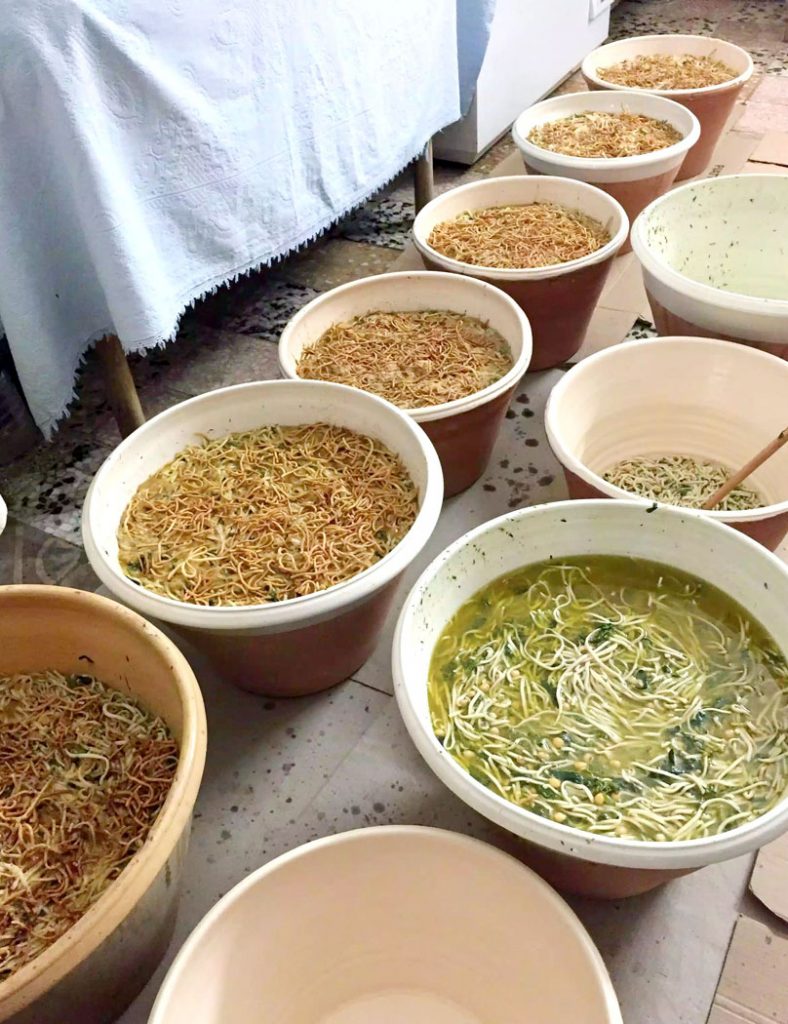
Two nights before the celebration we were invited to the local town square for the first part of the festival. There was a live band playing traditional music and people having so much fun dancing the Pizzica. The Pizzica is the traditional music and dance of Salento and is has its origins in healing. It was played to remove madness and hysteria (tarantism) which occurred in women. The madness was said to be caused by poisonous spider (tarantula) bites which is where tarantella comes from. The only way to relieve the madness was to dance and sing while the women rolled around hysterically on the floor. However, there are no tarantulas in this region. So what of the madness caused by the bites? The actual cause remains unknown but some say that the women were driven mad by their husbands!
The town ate the massa and other traditional dishes, provided by the volunteers from the community. 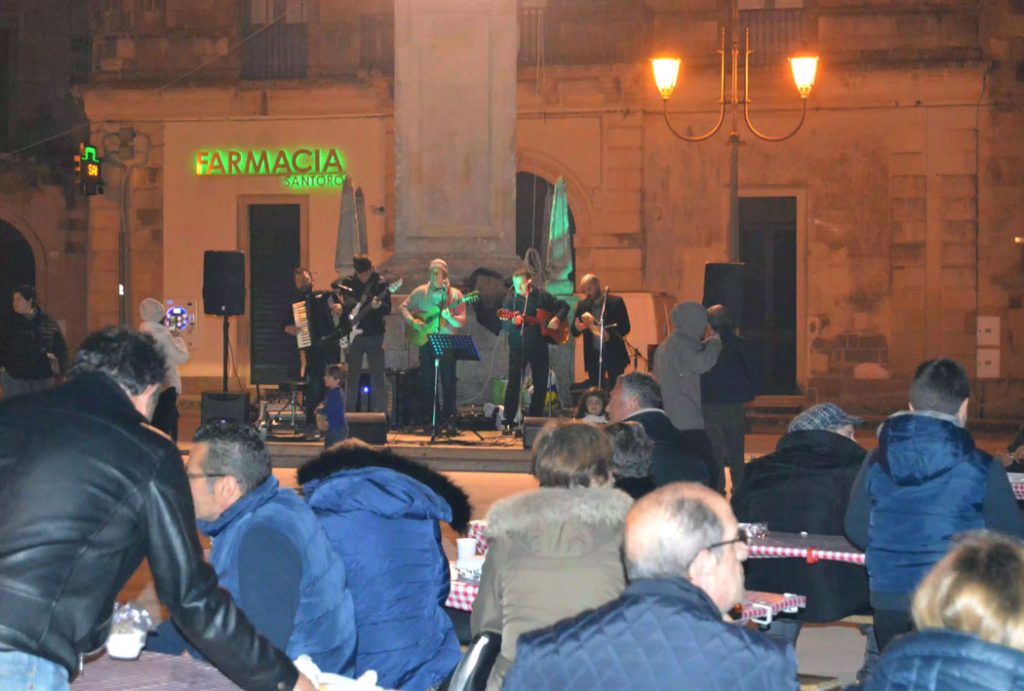
The Night Before
On March the 18th, families can create a Tavola di San Giuseppe in their home. Anyone can host a table and they are prepared according to precise rules. The tables are laid out with places for Saints to eat at. There must always be an odd number of Saints invited to the tables. Jesus, Mary and Joseph are the three that are always invited and other saints such as St Mary Magdalene or St Catherine can be included. There must be minimum of three and up to a maximum of thirteen people at the table (13 represents the number of people at the last supper).
That evening we went to the church to see the table all set up. It was filled with food, the Torti, with fennel and and orange which is very traditional and then so many other regional foods. From olive oil, to wine, to pasta, sugar and wild onions. Everything from the region was represented. We were also told that we would be representing the Saints at the table. I would be Santa Caterina (Saint Catherine). This was an enormous privilege as everyone in the town hopes to be chosen to represent one of the Saints and it is a great honour.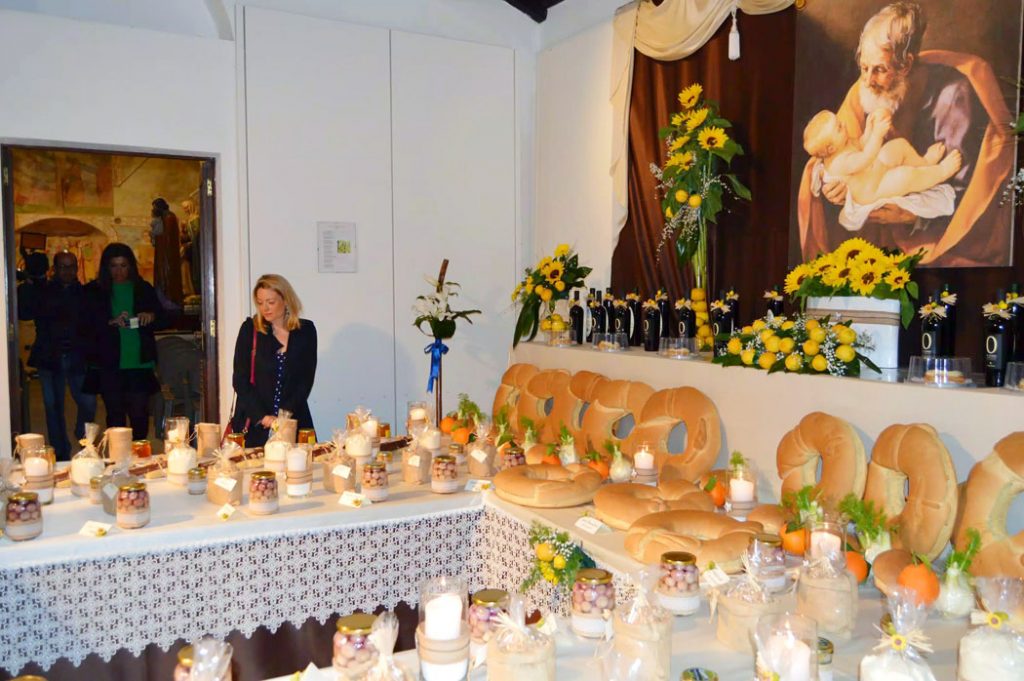
At the church that evening the massa was distributed to everyone present as they gathered to pray over the table.
After the church we visited the houses of others who had decided to host their own Tavole di San Giuseppe.
First we went to the local nunnery where one of the main celebrations would be happening the next day. There, there were so many dishes of cooked regional food laid out, ready for the feast the next day. Ranging from fried fish to the pickled wild onions of the region to a traditional pasta made with honey and breadcrumbs. This is the time-honoured way of celebrating the festival however today, some families choose to put symbolic food on the table that represents the tradition rather than cooking everything.
There was a celebratory feel to the whole village that night. Everyone was in a party mood and all the houses welcomed us in. There was food and drink offered at each place and we were really made to feel part of the whole festival. Every table was different, from the number of Saints invited to the type of food prepared. However, the one thing that the all had in common was a portrait of statue of St Joseph in the centre. Some were bursting with dishes and some were more modest.
We had so much fun meeting all the local people and each house had a different atmosphere and experience. The last house we ended up in was definitely the most raucous. We were invited in to a whole meal where we drank wine and ate local food. The ‘Nonna’ (grandma) of the house even passed around her legendary chilli jam! Powerful stuff and there were few tears from the heat! I love the community feel of the whole village that evening. There really was an almost electric atmosphere. Everyone was excited for the festival the next day and you could see how important the tradition was to the town. The welcome we received was incredible. We were foreigners who did not know the tradition or even speak the language but we were made to feel like part of the family.
The Taula
On the day of the feast, after attending mass, the saints go to the houses where they are expected. We went to the church we had been to the night the before. I was Santa Caterina for the day and we stood around the table in front of all the food. The priest gave a blessing after which we went up one by one to receive the food that was being distributed to us. Our experience of the festival was more of a symbolic one as we didn’t actually have to eat the food. It was a very humbling experience to be offered such a huge amount of food and love from the local people.
After that, the statue of St Joseph was removed from the church and paraded around the village with a procession. The men of the village also formed a marching band to lead the people to the nunnery where the main Taula was to take place.
The traditional Taula (the lunch) is slightly different. It begins at 12pm on the 19th March. The priest gives a blessing, after which the guests will sit at the table and start eating. However, it will always be St. Joseph who “rules” the event. He starts the meal by banging his staff on the floor and then the meal can commence. It is also up to him to decide when you stop eating each dish. After a few mouthfuls he will beat his fork three on the edge of his plate or glass. This signals all the other saints to stop eating and move on to the next dish.
At the end of lunch, after a short moment of prayer, the saints take away with them all that is left. This was the way that food was distributed to the poor as it was the most needy that were the invited saints. The Mayor presided over the dinner and the whole event was so interesting to watch.
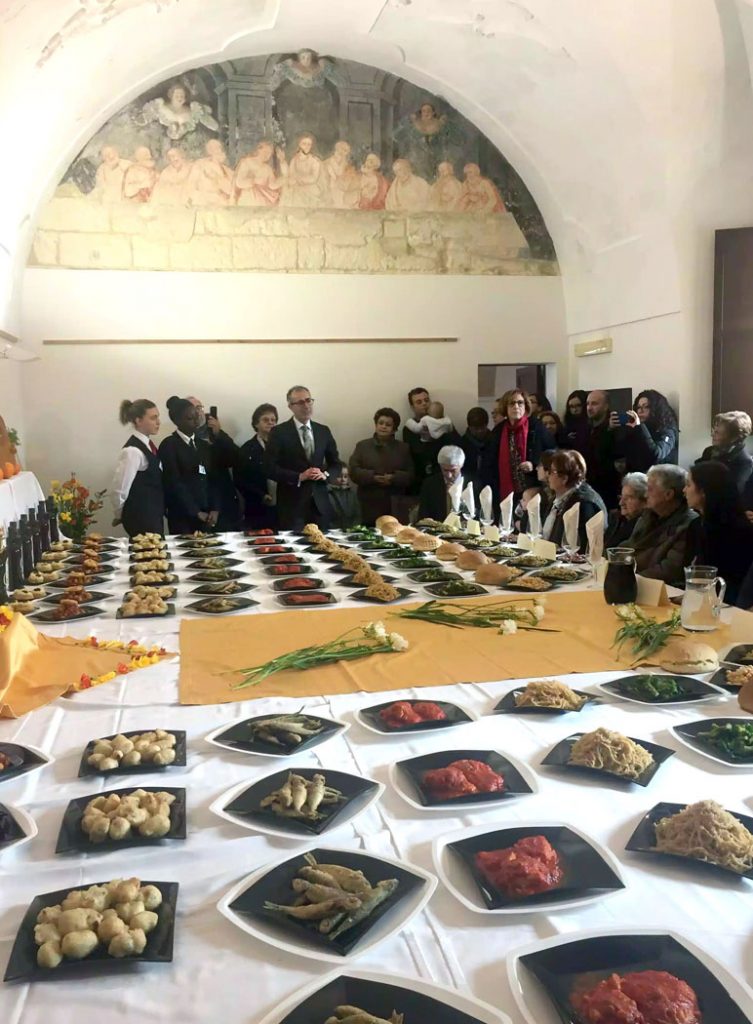
I felt so honoured to be able to experience the Tavole di San Giuseppe for myself. The town was so incredibly welcoming to us. To make us saints at the table was the greatest honour they could have bestowed on us. As this is normally reserved for important members of the community it was amazing to be allowed to be a part of this festival. It is so important to keep traditions like this alive. If the small towns in this regions didn’t continue the tradition it would die out! It really was fantastic to experience and I would recommend the trip to everyone.
If you would like to experience the Tavole di San Giuseppe for yourself then the Salento tourist board would be happy to have you.
You can find out more information by google translating this page or this one.
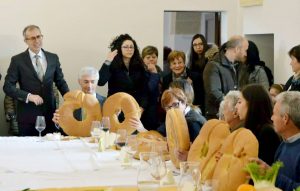

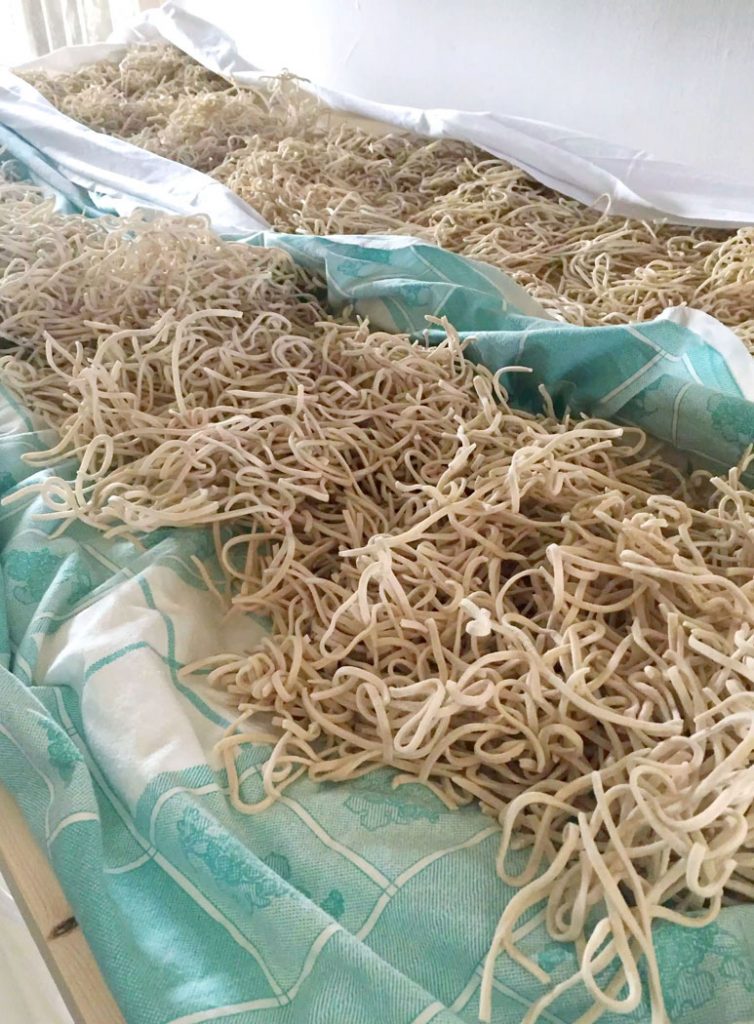
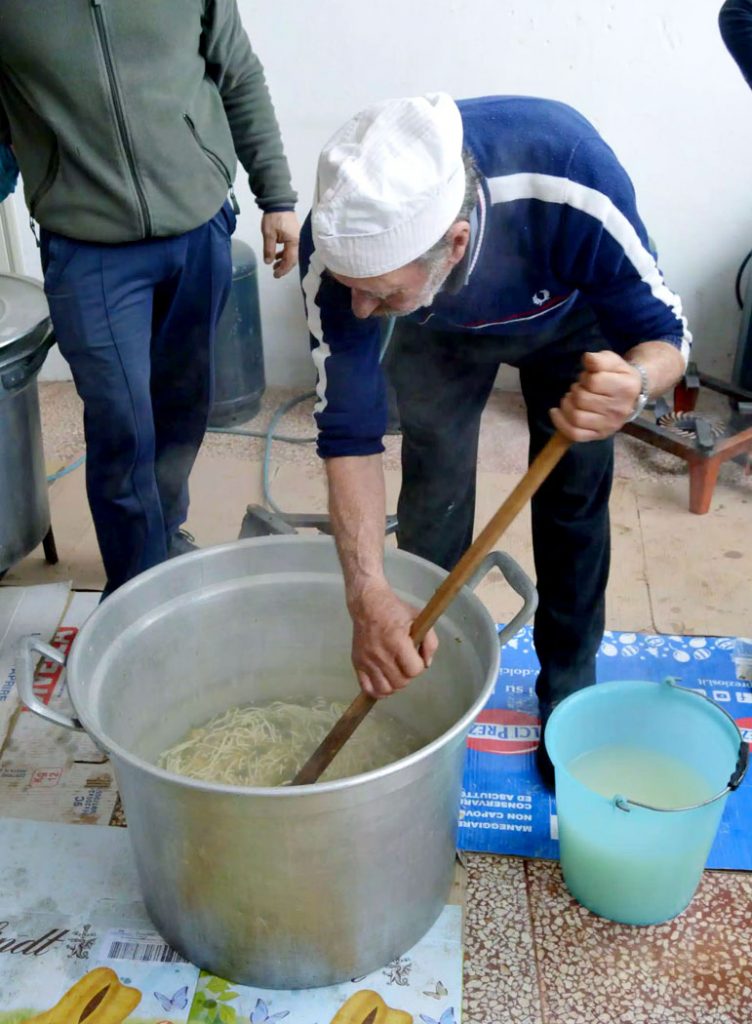


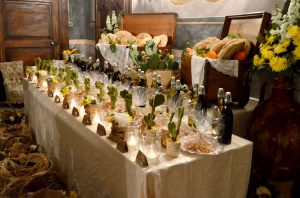
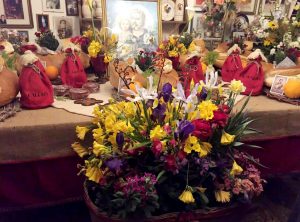

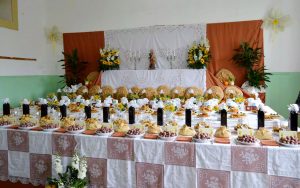
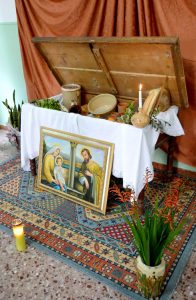
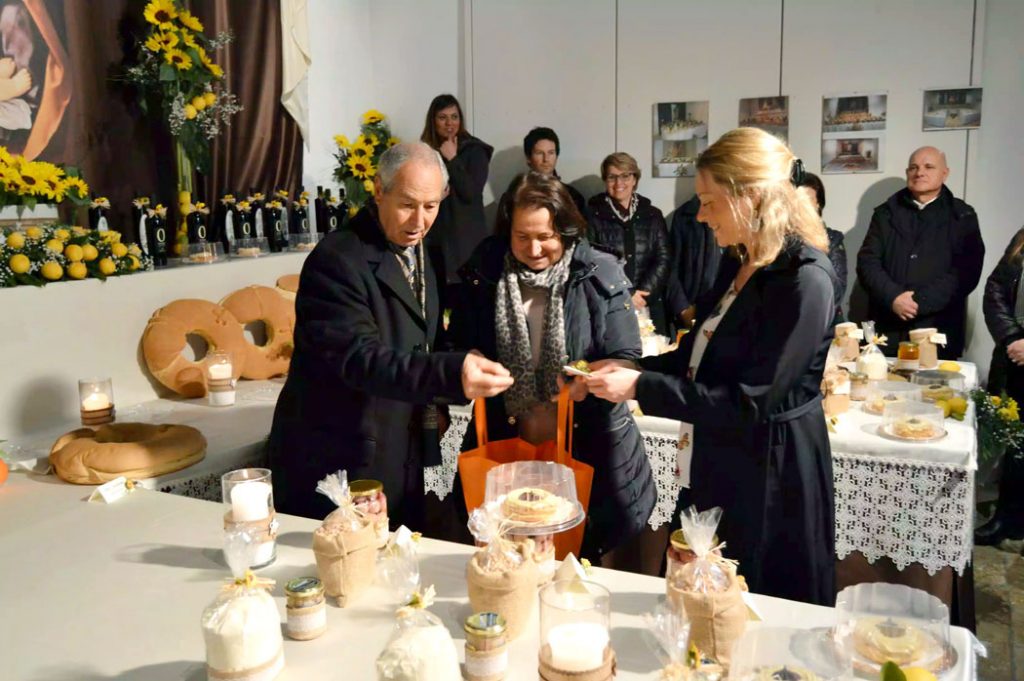
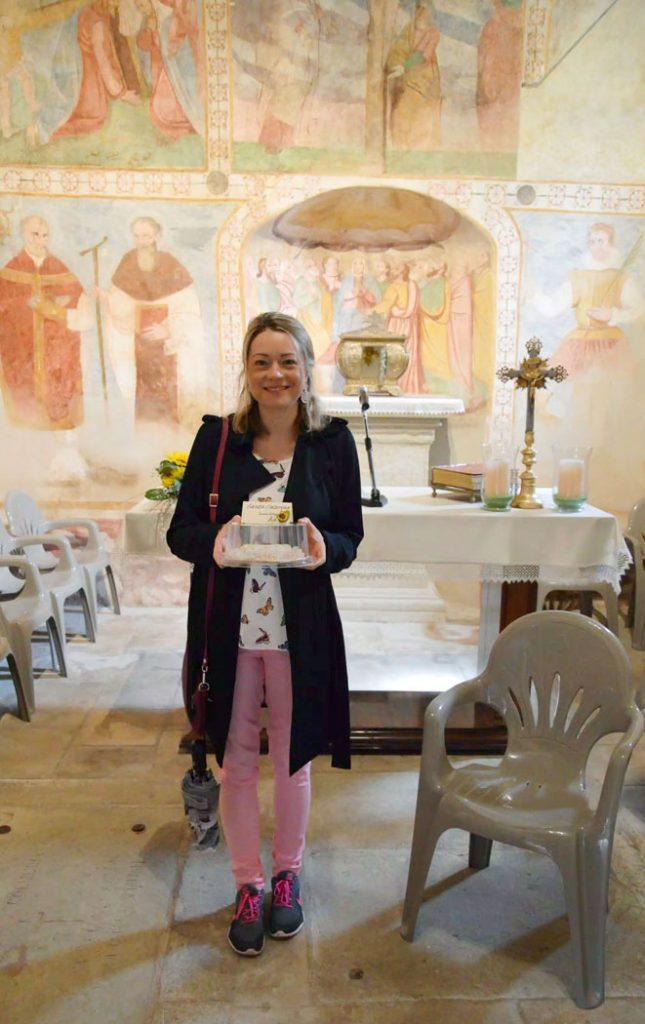
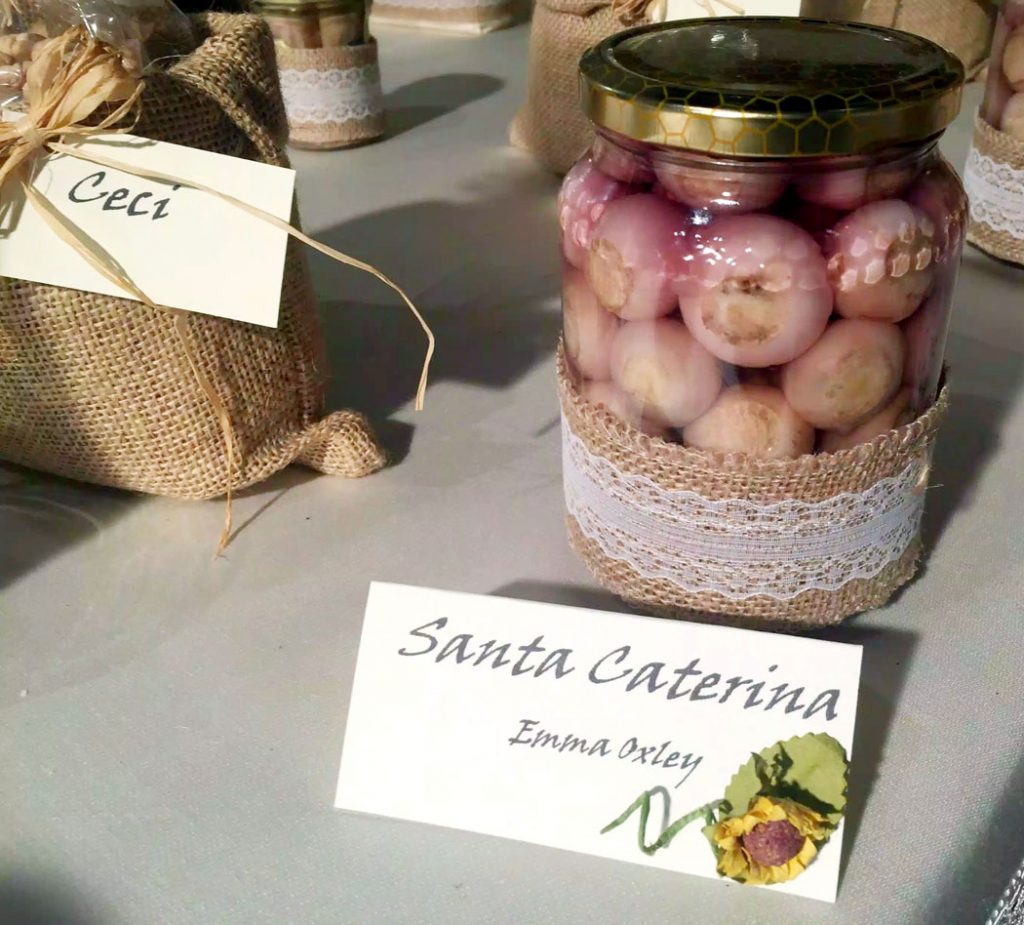

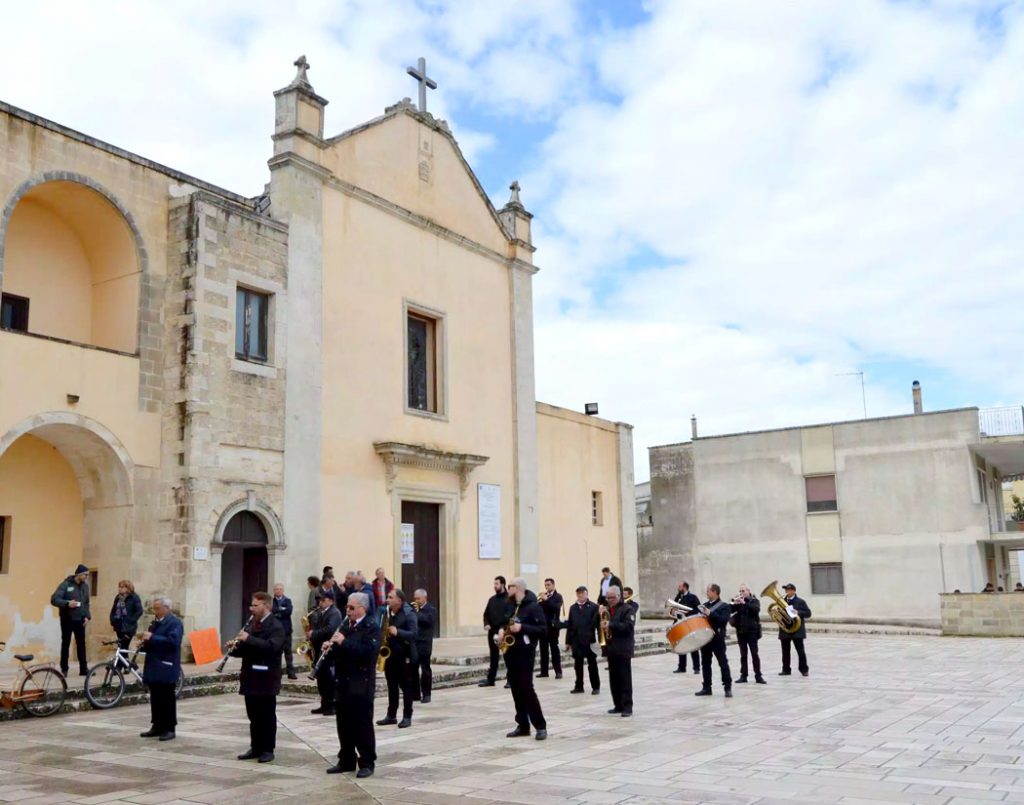
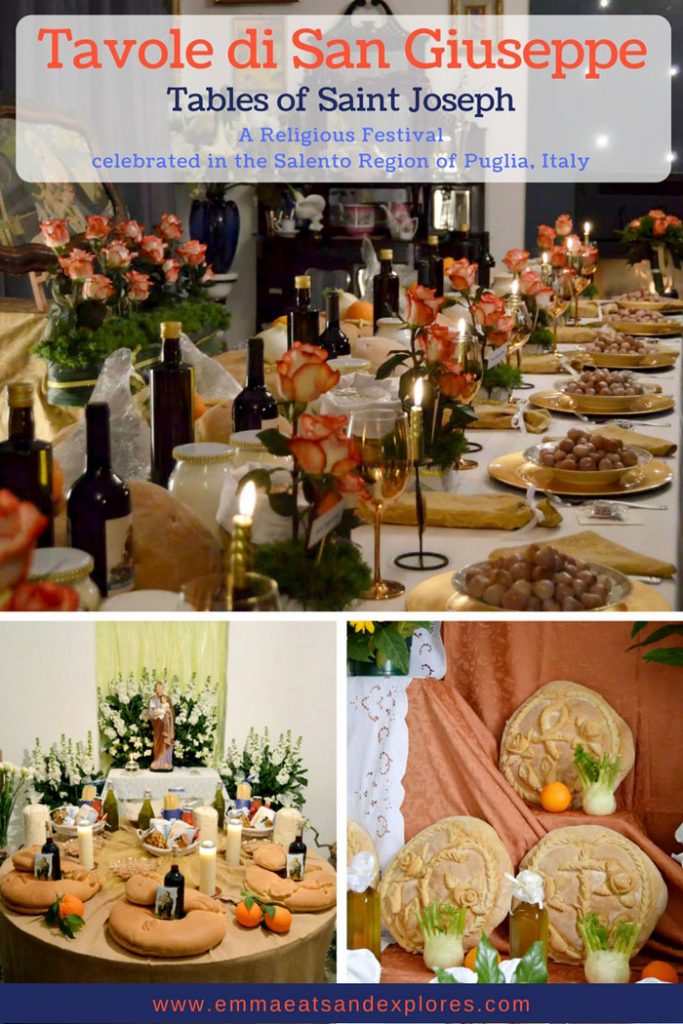
What an amazing experience. How lucky you were to be able to be part of that.
I am Italian-American and we celebrate St. Joseph’s Day each year. St. Joseph’s Tables take place at various churches and community centers in and around Chicago (where I live). We have our own traditions here but it’s interesting to learn how the feast is celebrated in Italy.
So good to know the tradition isn’t dying out! I was led to believe that it’s only celebrated in this small region of Italy and a few places in Sicily! Glad it’s still going strong in Chicago too!
What an interesting festival, great to hear about your experiences! How lovely to be a part of it 🙂